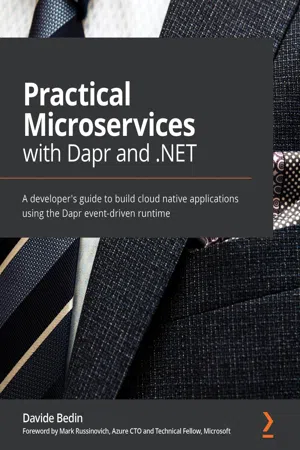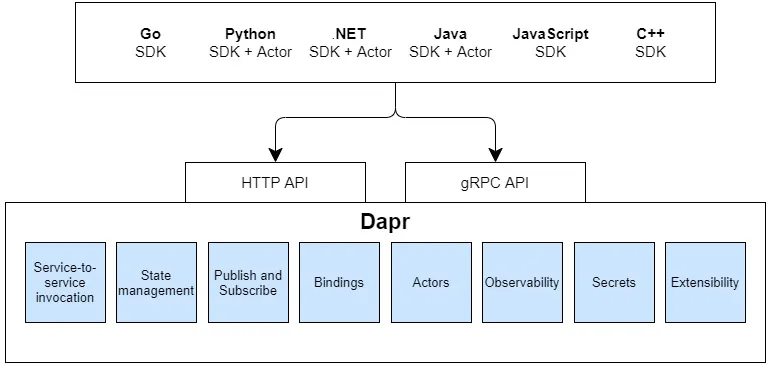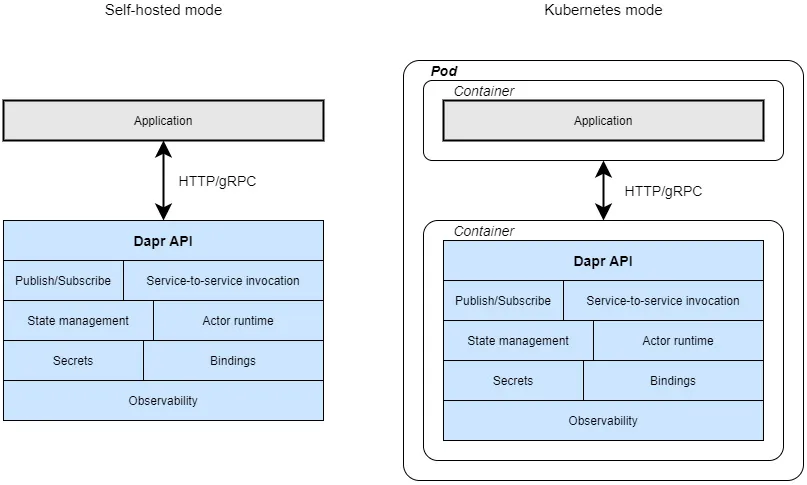
Practical Microservices with Dapr and .NET
A developer's guide to build cloud native applications using the Dapr event-driven runtime
- 262 pages
- English
- ePUB (mobile friendly)
- Available on iOS & Android
Practical Microservices with Dapr and .NET
A developer's guide to build cloud native applications using the Dapr event-driven runtime
About This Book
Use the new, enticing, and highly portable event-driven runtime to simplify building resilient and scalable microservices for cloud and edge applications
Key Features
- Build resilient, stateless, and stateful microservice applications that run on the cloud and edge
- Solve common distributed systems such as low latency and scaling using any language and framework
- Use real-time and proactive monitoring tools to support a reliable and highly available system
Book Description
Over the last decade, there has been a huge shift from heavily coded monolithic applications to finer, self-contained microservices. Dapr is a new, open source project by Microsoft that provides proven techniques and best practices for developing modern applications. It offers platform-agnostic features for running your applications on public cloud, on-premises, and even on edge devices.
This book will help you get to grips with microservice architectures and how to manage application complexities with Dapr in no time. You'll understand how Dapr offers ease of implementation while allowing you to work with multiple languages and platforms. You'll also understand how Dapr's runtime, services, building blocks, and software development kits (SDKs) help you to simplify the creation of resilient and portable microservices. Dapr provides an event-driven runtime that supports the essential features you need to build microservices, including service invocation, state management, and publish/subscribe messaging. You'll explore all of those in addition to various other advanced features with this practical guide to learning Dapr.
By the end of this book, you'll be able to write microservices easily using your choice of language or framework by implementing industry best practices to solve problems related to distributed systems.
What you will learn
- Use Dapr to create services, invoking them directly and via pub/sub
- Discover best practices for working with microservice architectures
- Leverage the actor model to orchestrate data and behavior
- Use Azure Kubernetes Service to deploy a sample application
- Monitor Dapr applications using Zipkin, Prometheus, and Grafana
- Scale and load test Dapr applications on Kubernetes
Who this book is for
This book is for developers looking to explore microservices architectures and implement them in Dapr applications using examples on Microsoft.NET Core. Whether you are new to microservices or have knowledge of this architectural approach and want to get hands-on experience in using Dapr, you'll find this book useful. Familiarity with.NET Core will help you to understand the C# samples and code snippets used in the book.
Frequently asked questions
Information
Section 1: Introduction to Dapr
- Chapter 1, Introducing Dapr
- Chapter 2, Debugging Dapr Solutions
Chapter 1: Introducing Dapr
- An overview of Dapr
- The architecture of Dapr
- Setting up Dapr
- Building our first Dapr sample
Technical requirements
An overview of Dapr


What Dapr is not
- Dapr's goal is not to force the develo...
Table of contents
- Practical Microservices with Dapr and .NET
- Why subscribe?
- Preface
- Section 1: Introduction to Dapr
- Chapter 1: Introducing Dapr
- Chapter 2: Debugging Dapr Solutions
- Section 2: Building Microservices with Dapr
- Chapter 3: Service-to-Service Invocation
- Chapter 4: Introducing State Management
- Chapter 5: Publish and Subscribe
- Chapter 6: Resource Bindings
- Chapter 7: Using Actors
- Section 3: Deploying and Scaling Dapr Solutions
- Chapter 8: Deploying to Kubernetes
- Chapter 9: Tracing Dapr Applications
- Chapter 10: Load Testing and Scaling Dapr
- Appendix – Microservices Architecture with Dapr
- Other Books You May Enjoy